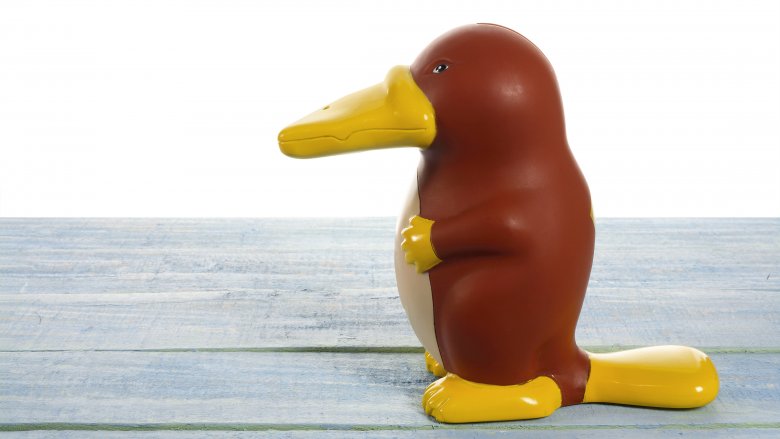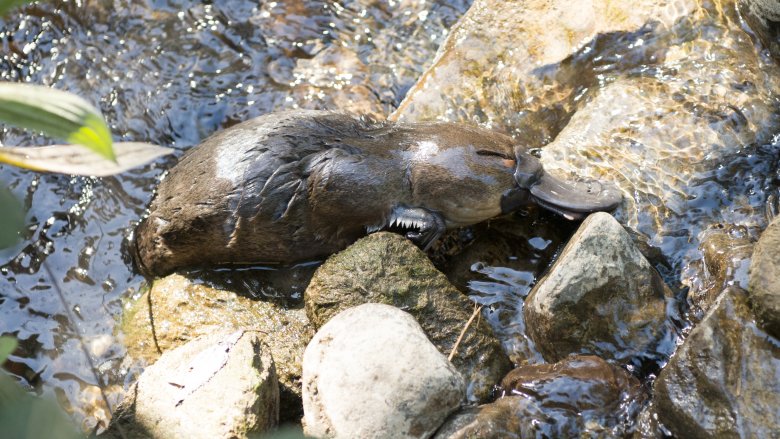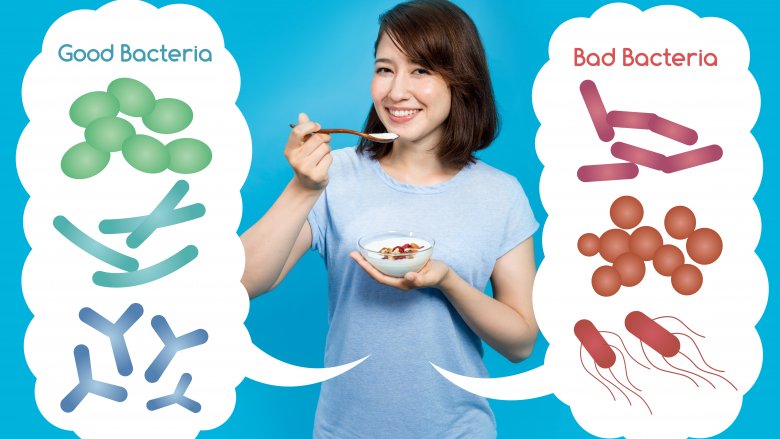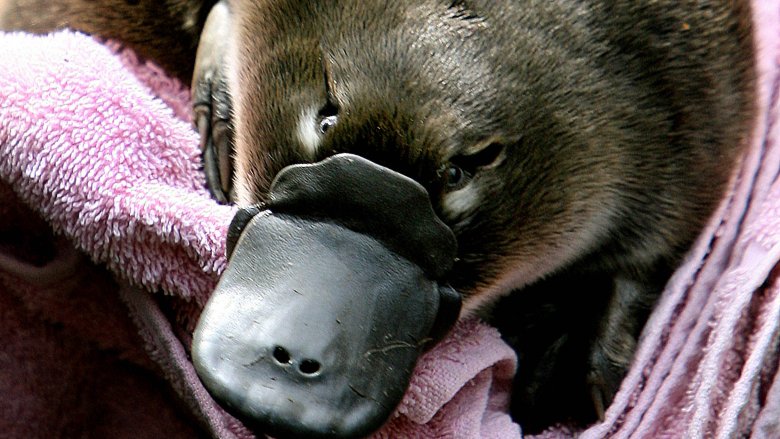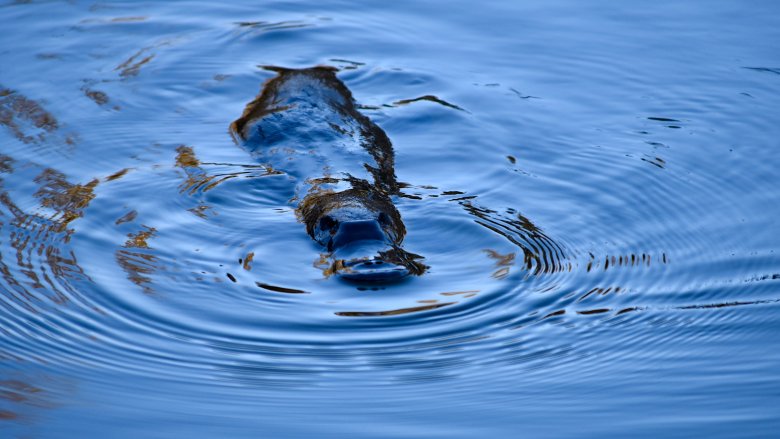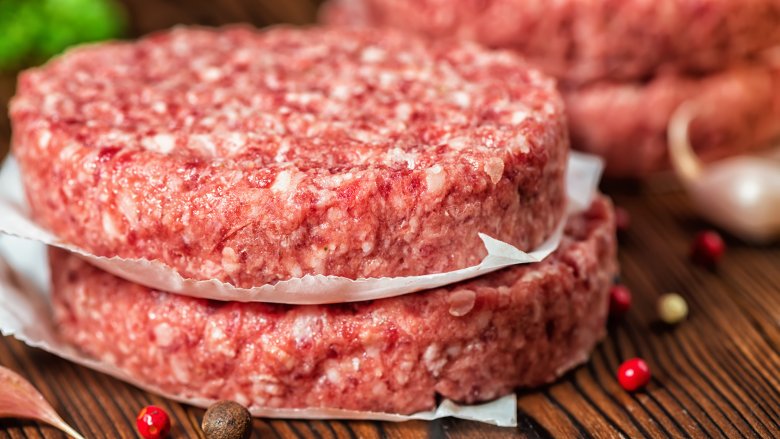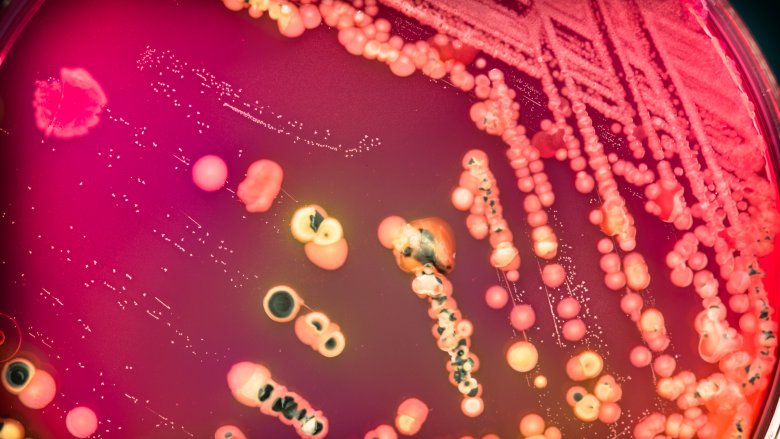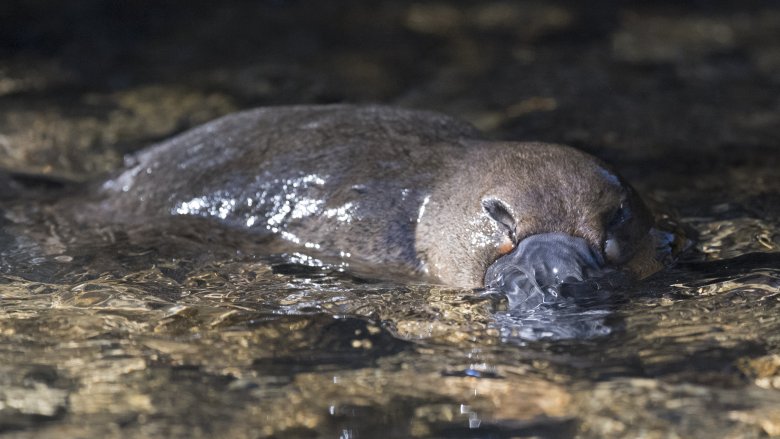Why Platypus Milk Could Save Your Life One Day
Remember the good old days, when you only had to choose between whole and skim milk that came from a cow? Those days are long gone, and now we're used to things like soy, almond, and coconut milk. But platypus milk?
This one needs a little clarification. (Actually, a lot of clarification.) You're not going to be seeing cartons of this pop up on your grocery store shelves, unfortunately, but it's entirely possible it's going to form the building blocks of the solution to a problem that's on a lot of people's minds: antibiotic resistance.
For decades, we've been using and over-using antibiotics to the point where some of the most dangerous bacteria in the world have built up a resistance to it. That means there's a serious potential for a global pandemic lurking just around the corner and the World Health Organization warns it's one of the biggest threats to worldwide health today. It's only getting bigger and, in short, finding new antibiotics is something we all need to get behind. So, let's talk about the problem, and the possible solution.
What should you know about antibiotic resistance?
Before we talk about why platypus milk is the solution, let's talk about the problem. The World Health Organization says our overuse of antibiotics is helping bacteria become more and more resistant to modern medicines. That makes bacterial illnesses — like pneumonia, tuberculosis, and salmonella — harder to treat.
That's not good news for anyone, and it's entirely possible your dinner is making the problem even worse. According to Scientific American, one of the biggest sources of antibiotic resistance is the livestock raised for human consumption. It's a complicated issue (that we took an in-depth look at here), but basically, someone discovered decades ago that giving animals antibiotics increased their weight, meat yield, and profitability. We didn't think anything of it at the time, and we're starting to pay the price today. Now, there are laws in place regulating the use of antibiotics in animals only for their intended purpose, but there's a growing concern that it's too little, too late.
The ultimate antibiotic
Enter, the platypus. They're such funky, weird little animals that National Geographic says when scientists first got a look at this egg-laying mammal, they thought someone was playing some kind of joke on them. There's literally nothing about the platypus that makes sense, so in a weird way, it's kind of logical that if any mammal is going to have magical milk, it's these gals.
Australia's national science agency, CSIRO, has been studying the chemical structure of platypus milk, and in 2010, they found something weird. Buried in the chemical makeup of the milk is a protein containing some serious antibacterial properties. More than that, researchers say it's a specifically targeted antibiotic that fights off the bacteria present in the platypus's environment, but doesn't touch the good bacteria present in baby platypuses's tiny, tiny bodies. (And yes, they're actually just called baby platypuses.) That's a huge deal (and we'll talk about why). The Guardian says it's such a big deal, in fact, researchers haven't just studied the protein, they've recreated it in an attempt to figure out what makes it so potent.
Why is this such a big deal?
So why is this such a big deal?
The first antibiotic we discovered was penicillin, and since then, there's been more than 100 different antibiotics created from various sources. But there are a few reasons finding new antibiotics is so difficult. According to the BBC, it's actually pretty easy to find chemicals and compounds that kill bacteria, but it's not easy to find substances that will do it while still being safe for human consumption. It takes anywhere from 10 to 20 years to discover, develop, and test a new antibiotic, and most will fail somewhere along the way.
The fact that the antibacterial proteins in platypus milk will attack bad bacteria but leave good bacteria alone is huge. Good bacteria is crucial to good health, and supports our immune system, while warding off heart disease and obesity. LiveScience says there's an estimated 100 trillion bacteria in our gut (meaning we have more bacteria than we have cells). Finding antibiotics that will attack invaders while leaving this bacteria alone is no small feat.
Why the platypus?
The next logical question is to ask just why platypus milk comes with this protein, and it's as weird an answer as you could possibly hope for. Most mammals have a pretty efficient milk delivery system. Take cows (or cats, or dogs, or people, for that matter — literally, every other mammal save our platypus) for example. Milk goes right from their udders to their babies, and it's not just efficient, it's sterile.
But, the platypus doesn't have any system of the sort. The American Museum of Natural History says Mother Platypus is the only mammal that sort of sweats her milk out onto her stomach, where it collects in grooves on her skin. Babies lick the milk up, off of her skin or fur, and as you might expect it's not very sterile. Researchers think that weird way of nursing young is why the platypus evolved this particular, potentially life-saving protein (via The Guardian). Milk exposed to the not-so-clean platypus environment would stay safe for baby, and that's pretty nifty.
Why, exactly, is it that's so important for us?
None of that actually explains what's going on here, and it's complicated. Researchers from CSIRO and Deakin University say not only did they identify what's essentially an antibacterial protein, they also recreated a digital, 3D version of it. That's when they discovered there was even more weirdness going on. The protein sports a strange fold, and the shape is reflected in the name they gave it: Shirley Temple.
Without getting too sciency and technical, it's tough to give an accurate idea of just how incredible the structure is. We'll put it this way. The Guardian says there have been more than 100,000 protein structures discovered prior to the Shirley Temple, and not one of them has the same shape as the platypus milk protein. That suggests there's definitely something unique going on here, and in turn, that's got scientists hopeful the milk from this unlikely animal might be able to help us undo a lot of the damage we've done.
What kind of bacteria are we talking about?
There are a few different answers to this question, and to start, we'll talk about something we hear a lot about in the food world: E. coli. The Mayo Clinic cites things like undercooked beef and fresh produce as major sources of E. coli-based food poisoning, and that covers two very basic ingredients for a lot of people. E. coli is also one of the big bacterial illnesses that has been developing a resistance to even last-chance antibiotics.
Popular Science says colistin is an antibiotic developed in the 1940s, but it's rarely used because it comes with a list of horrible side effects, like the potential for kidney failure. In 2015, researchers found E. coli had built up a resistance to it, and traced it back to the tendency to use colistin — a lot of colistin — in the pork industry. That's terrifying, and it sounds like something you'd find in the opening few minutes of a movie about pandemics.
Since then, the World Health Organization has ranked the most drug-resistant bacteria out there, and the list is an uncomfortable look into our potential future. It includes bacteria like Staphylococcus, Salmonella, and Streptococcus — and you've heard of them all.
What is the platypus protein effective against?
Here's where things get a little more optimistic. The CBC reported on some of the experiments that have already been done with the platypus milk protein, and the same researchers that discovered it have already exposed the milk-based antibacterial to Staphylococcus aureus (which causes staph infections) and Enterococcus faecalis (which causes things like UTIs).
Good news — the protein killed both types of bacteria, easy-peasy-lemon-squeezy. That means it's not just a pipe dream this protein could work to form the basis of new antibiotics for humans, and honestly? It's about time we got a little good news on this front.
It's also possible there might be more coming down the pipeline, too. Researchers say every creature on earth contains tens of thousands of different kinds of proteins, and this is just one protein from one part of the platypuses' weird biochemical makeup. If we want to find more, we need to get moving. Researchers say the creature's unique designation — a monotreme, or egg-laying mammal — is likely what gives it such unique properties, and the platypus is only one of two such animals on earth (via Scientific American).
Other platypus super-powers
Strangely, this isn't the first or the only major discovery to come out of a close examination of platypus fluids. In 2016, Science Alert reported on a discovery from the University of Adelaide and Flinders University. They were looking at platypus venom, because yes, they're venomous. The male platypus secretes a venom during breeding season, delivered by a spur on the rear leg and powerful enough to kill small animals (although typically only used for discouraging males competing for the affections of the same lady platypus).
The venom contains a variation of a hormone produced in humans (and in other animals), and it's linked to stimulating the production of insulin. While the human variant breaks down after just a matter of minutes, the platypus hormone doesn't have the same degradation mechanism. That might make it a key component in developing new treatments for diabetes, and if you're wondering what other surprises there are in the strange creature that is the platypus... science is wondering, too.
